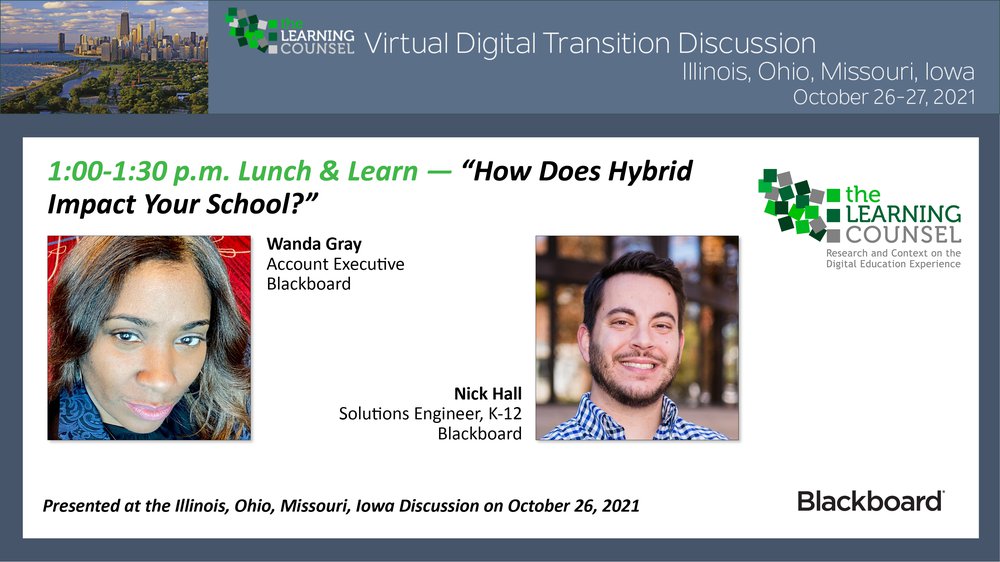It’s time to enjoy another Lunch and Learn presentation. In this presentation, the Learning Counsel, with the help of Blackboard, explore equity of access in a digital learning environment. With us today are Wanda Gray, Account Executive at Blackboard and Nick Hall a Solutions Engineer for the K-12 division at Blackboard.
According to Wanda Gray, “We'd like to talk about this premise of the understanding that educational communities are always striving to put forth positive culture and supportive learning environments to really support all students and we place an emphasis on all students and families. There is an imperative and there is a desire to really understand what that means when we talk about digital content. And so in our presentation today, we want to focus on sharing, building that awareness in districts and at the school-based level about what is digital access of information, relative to the content that lives and breathes on websites, as well as instructional materials within learning management systems and really how to instill some knowledge and best practices when we think about teachers and administrators and content creators, as they are making the information equally accessible and inclusive to all students.”
According to Nick Hall, “When we look at equity of access in a digital learning environment, we first need to understand what sort of challenges students, parents, and any other end users might face. We have cognitive disabilities and this can impact as many as 25 percent of the population and includes things like dyslexia, ADHD, autism, PTSD, and others. These individuals struggle to concentrate process information and solve problems. Visual disabilities don't just include complete blindness, but also low vision colorblindness seizure, partial blindness seizures, seizure sensitivity. These individuals might rely on devices from eyeglasses and contacts to spring raiders, and many struggle to see colors or read content, colors, contrast, and even using images to convey information can create challenges for people with visual disabilities.
“And this is something that I didn't think about when I was on the institution side, but physical disabilities. With a higher focus on accessibility, this is something that I've really come to learn about a lot further - lost limbs, limited mobility, fine gross motor control or even paralysis. Many people with physical disabilities often struggle to explain what they're unable to do when problems arise with access. They may access assistive technology like eye tracking, software, mouth sticks, foot pedals, and thumb clickers to navigate digital content. And then hearing disabilities challenges ranging from slight hearing loss to total deafness. They have to use assistive devices like hearing aids and interpreters and captions and videos and multimedia. And many students have specific requirements for accommodations that have to be made so that they can engage in their educational process, such as an alternative accessible format of content. Oftentimes schools or districts are more than willing to provide the alternative accessible content, but the process the student has to go through and the length of time it takes to create that access delays the student's ability to engage in meaningful conversation with their peers or to prepare for exams.”
When it comes to equity of access in digital learning environments, there’s more to consider than meets the eye (or the ear or even tactile input). In addition to very serious legal considerations, equal access through assistive technology is a top concern to every school and district; it directly challenges our ability to educate our children. Join the experts at Blackboard for this very enlightening presentation and let them guide you through the often hard to navigate access waters.










